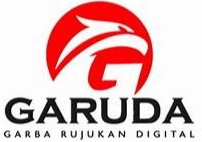Analisis Kegagalan Pada Roda Gigi Miring Intermediate Gear 2 Pada Gear Box Untuk Roller Press Milling Machine
DOI: https://doi.org/10.25077/metal.1.2.55-69.2017
Author(s)
Andri Anto (Jurusan Teknik Mesin, Fakultas Teknik, Universitas Andalas, Padang)Dedison Gasni (Jurusan Teknik Mesin, Fakultas Teknik, Universitas Andalas, Padang)
Abstract
Keywords
Full Text:
PDFReferences
N. Samceng dan S. Panya “Failure Analysis of a Helical Gear”, Paper presented at The First TSME International Conference Mechanical Engineering, 20-22 Oktober 2010, Ubon Ratchathan, Thailand.
K. L. Alchay dan V. Dwakar, “Metalurgical Analysis of Failed Gear”, Engineering Failure Analysis, Vol. 9(3), June 2002, pp: 359-365.
K. L. Johnson, “The Strength of Surfaces in Rolling Contact”, Journal Mechanical Engineering Science, Vol. 203 (C3), 1989, pp: 151-163.
D. J. Wupi, “Understand How Components Fail”, 2nd edition, ISBN 0-87170-671-8, ASM International, Materials Park, Ohio, 1985.
L. E. Alban, “Systematic Analysis of Gear Failure”, 2nd edition ISBN 0-87170-200-2, American Society for Metals, The United States of America, 1985.
P. J. L. Fernandes, “Tooth Bending Fatigue Failure in Gears”, Engineering Failure Analysis, Vol 3(3), September 1966, 1996, pp: 219-225.
R. J. Shipley dan W. T. Bader, “Failure of Gears”, Vol 11, Failure Analysis and Prevention, ISBN 087170-704-7, ASM International, Materials Park, Ohio, 2002.
Setiyana, “Perancangan Roda Gigi Metoda Niemann”. Jurusan Teknik Mesin, Fakultas Teknik, Universitas Diponegoro. 2007.
S. Mardjono, “Fracture Mechanics dan Prediksi Umur Kelelahan”, Jurusan Teknik Mesin, ITB.
T. Hidayat, “Fenomena Running-in Roda Gigi Transmisi” Program Studi Teknik Mesin, Universitas Muria Kudus, 2014.
G. Niemann, “Machine Elements Design and Calculation in Mechanical Engineering”. Volume II, Springer-Verlag, 1978.
J. D. Raymond, J. C. Roy dan C. Steve, “The Anatomy of a Micropitting-Induced Tooth Fracture Failure—Its Causation”, Initiation, Progression and Prevention, Gear Technology, June 2010
T. I. Fowle, “Gear Lubrication: Relating theory and practice”, Shell International Petroleum Co. LTd. London.
 Article Metrics
Article Metrics
This article has been read : 872 timesPDF file viewed/downloaded : 426 times
Copyright (c) 2018 Andri Anto, Dedison Gasni
View METAL's Stats

This work is licensed under a Creative Commons Attribution-NonCommercial-ShareAlike 4.0 International License.







